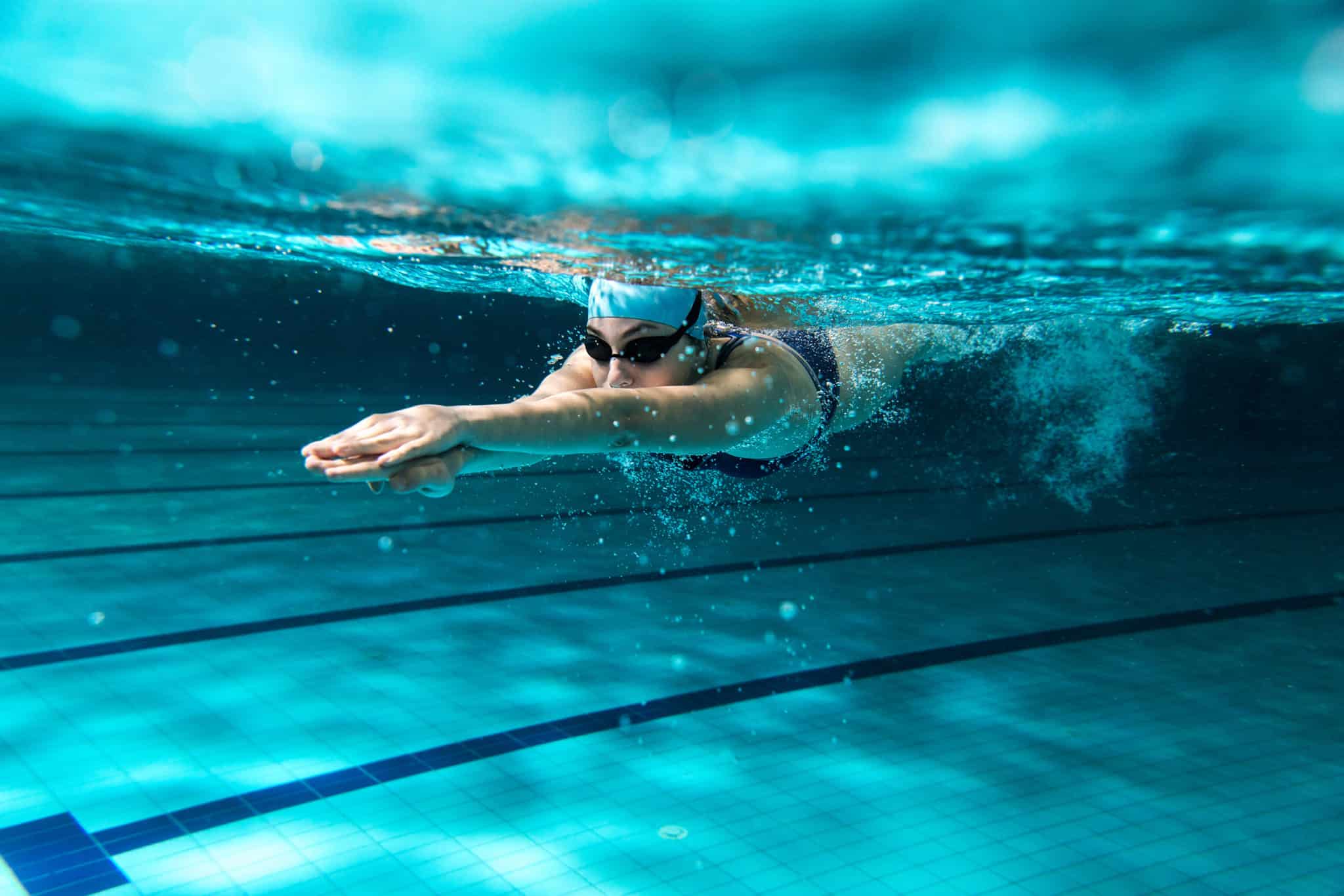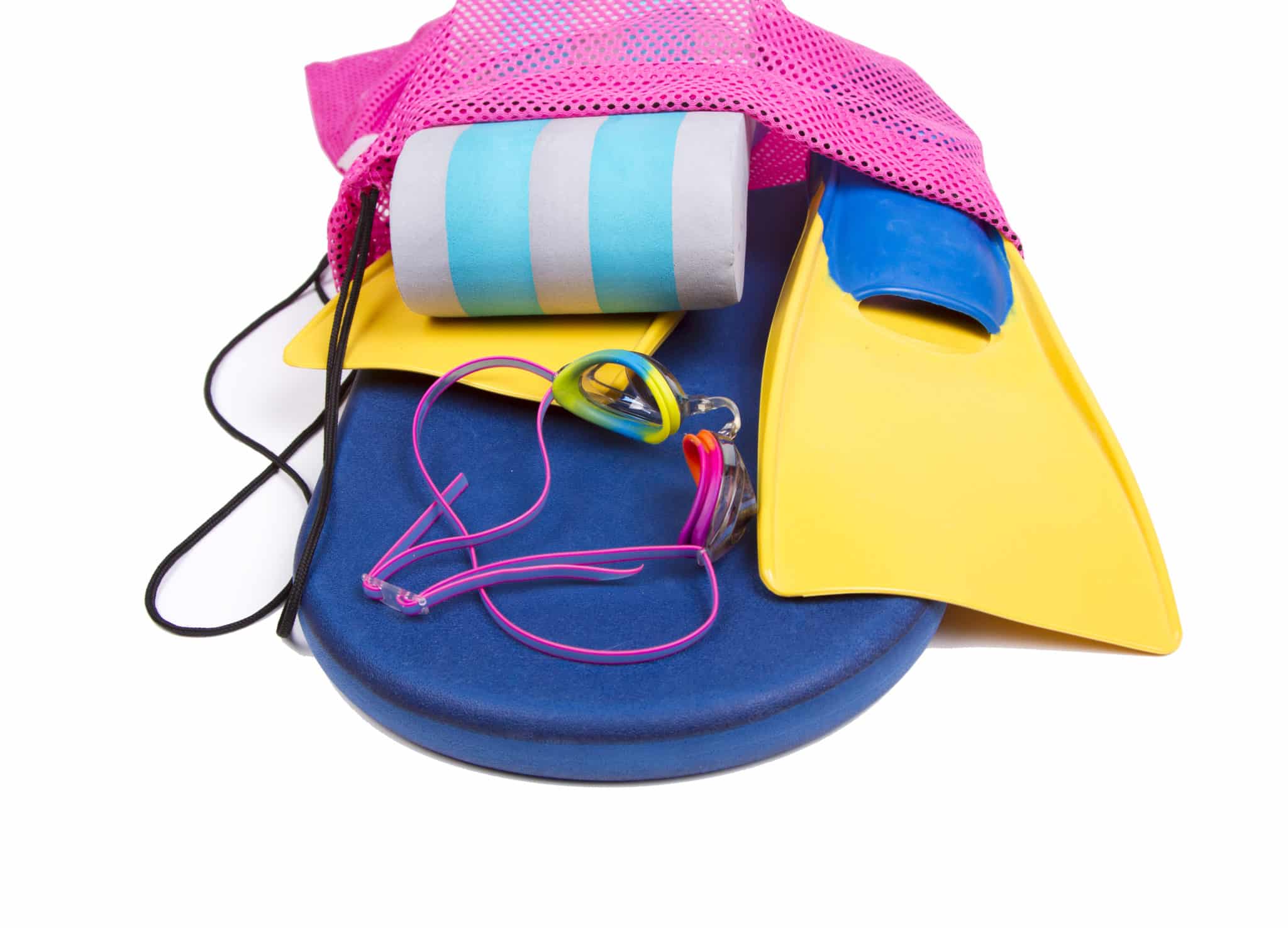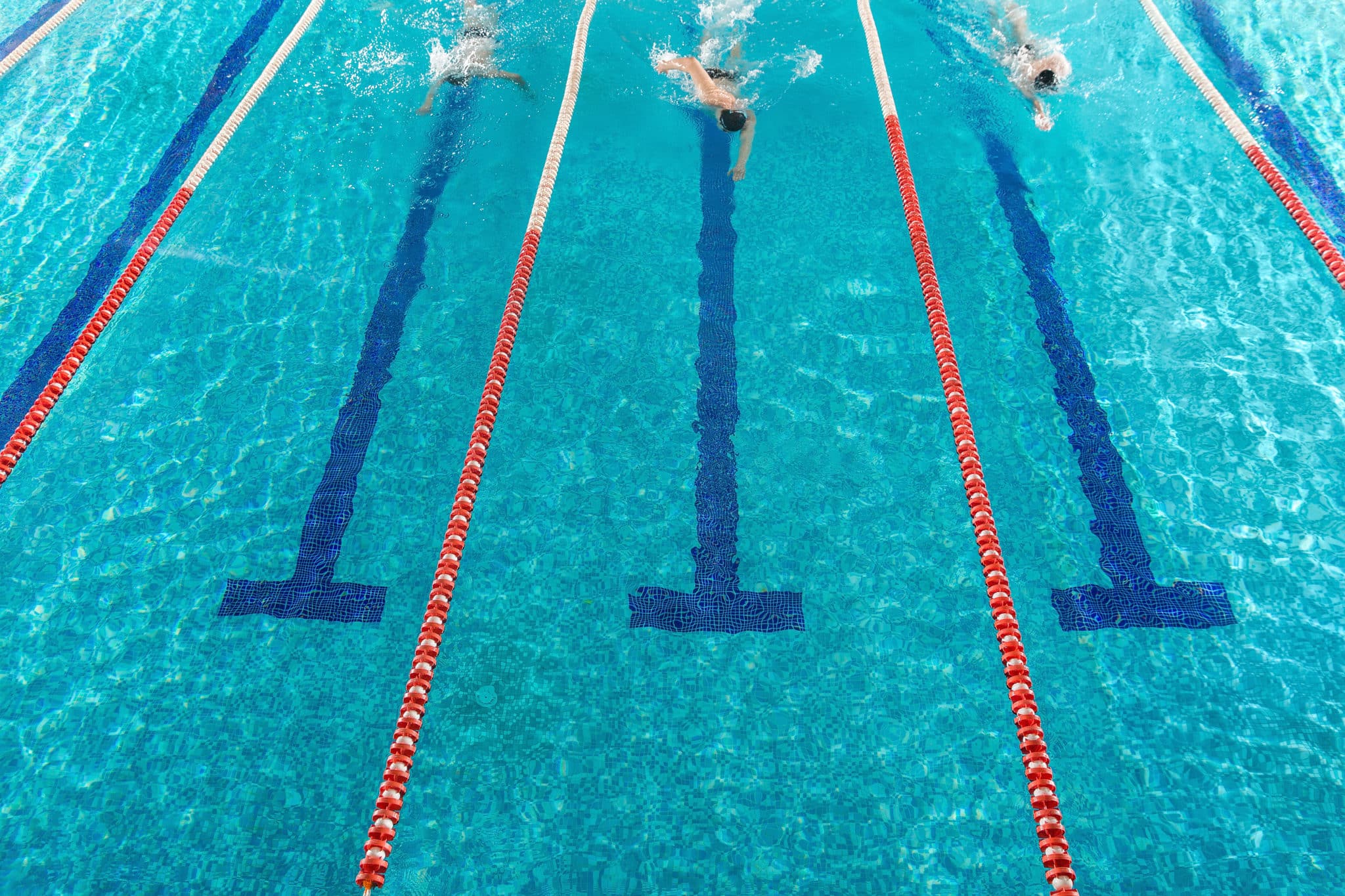This post contains affiliate links. Please see our disclosure policy.
Are you ready to make a big splash and take your workout into a pool or lake? Step, jump, or dive into our Beginner’s Guide To Swimming! Swimming is a great total body workout for all fitness levels. Whether you are an athlete or someone dealing with arthritis, swimming is an ideal exercise for you because it combines cardio and strength training and is low-impact.
No matter what your age or fitness level, swimming is a great way to switch up your exercise routine and do a workout that’s easy on your joints.
Swimming for beginners doesn’t need to be intimidating—learn the proper form, gear, and workouts to help you get started and help you get the most out of your first workout in the pool!
Table of Contents
Benefits Of Swimming
Okay, let us tell you about some of the awesome benefits of swimming. Swimming is a whole-body workout strengthening your heart and muscles, while increasing your flexibility and endurance. Swimming is a great cross-training workout, meaning the endurance you build while swimming is transferable to other activities, such as running.
If losing weight is your goal, swimming is a big-time calorie burner. Take a look at all of these benefits of swimming:

- For people who can’t do high-impact or high-intensity exercise due to injuries, swimming is a great alternative.
- Swimming is a calorie burning machine, even swimming slowly, a 130 pound person can burn over 400 calories in an hour. Swim quickly, and you’re looking at almost 600 calories!
- Swimming can help build cardiovascular and muscle strength., improve overall cardiovascular function and build your endurance.
- Swimming can enhance your range of motion.
- Many people find there is something soothing and relaxing about being in the water—even when they are working out.
How To Get Started With Swimming
Like most other forms of exercise, the key to getting better is getting started. Developing endurance and proper technique takes time, patience, and desire to learn the fundamentals. Failure to learn the basics can make swimming more difficult than necessary—but don’t fret.
Just take it one step at a time and you’re sure to get the hang of it!
- Start with treading water and getting comfortable in the water.
- Try some laps and get comfortable with the kickboard.
- Master breathing techniques (probably the most challenging part of swimming) with the kickboard. Breathing in the water is different from breathing on land. While swimming you have to get comfortable with your face in the water and develop a rhythm to you breathing. You exhale with your face in the water and inhale as you turn your head or pop up your head (depending on the stroke) to breathe.
- Learn the strokes.
You can start out in the shallow end of the pool with a noodle or kickboard doing some doggie paddling while practicing proper breathing (exhaling under water and inhaling above water).
Move to basic strokes and fine-tune your swimming movements either by paying for some swim lessons or by using our old friend YouTube when you have questions.
Water Workouts
If you’re new to swimming, you’ll want to get comfortable with moving around in the water before doing the butterfly stroke for 20 laps.
Start by simply walking around in the water or holding onto the edge of the pool and kicking your legs. Learn how to tread water without assistance. Frog-kicking and rhythmically moving your arms is the most effective way to stay afloat.
Try running through the water while maintaining good posture (don’t lean forward) and you will experience how water acts as a resistance.
Try our Splash & Tone Water Workout!
Once you feel comfortable in water, you’ll want to start trying out some basic strokes for a lap or two and base your personal workout regimen on how your body feels while swimming and change it up as your endurance increases.
If you’re not sure how to plan your own workout, there are resources to help create one for you. One of the most well-regarded beginner workout plans is the Zero to 1650 in Six Weeks plan that trains you to swim a full mile (a swimmer’s mile is 1650. It is the equivalent of 1,500 meters) by training three times a week.
The progression-based plan starts simply enough and gradually increases the difficulty. There are also apps for iOS and Android to help.
If you don’t want to commit to a lengthy plan, try adding quick drills to your lap routine. Try doing a few short laps as fast as you can with a short recovery time. For a less intense workout, just try to go faster than your normal speed.
There are a variety of helpful swim videos out there that will help increase efficiency while improving the quality of your workouts.
Related: How to Do the Swimming Exercise Move
Different Swimming Strokes

It’s helpful to learn a few of the main strokes before you begin your water workouts. Each stroke works different muscle groups, so change up the strokes you use to vary your workout and target different areas.
Some of the most popular strokes are the easiest to master:
- Freestyle or Front Crawl: The basic stroke where you’re on your stomach and swimming arm-over-arm while kicking.
- Backstroke: On your back, you kick while rotating your arms.
- Breaststroke: This looks similar to what a frog does, using wide movements for your arms and legs while moving your head in and out of the water.
Swimming Gear For Beginners

To get your swim workouts started, let’s make sure you are covered with all the basics. Step one? Buy a good bathing suit! For water exercise, you can go with a one-piece or two-piece, although there are some definite benefits to the one-piece.
I’ve spent time testing the top rated swimsuits so you don’t have to. Check out my favorite picks in my guide to the bathing swim suits for women over 50!
If you are going to be doing lots of laps, a one-piece is best because they allow your shoulders to move freely and they won’t fall down or slip off when you dive into the water. (Bonus!) Two-piece suits can be fine for paddle boarding or other fun in the water, but because they aren’t as streamlined as a one-piece, they aren’t the best for lap swimming.
Suits should fit nicely but not too tightly. Go bigger if the straps dig into your skin or cause any discomfort. Many of the items listed below are optional, depending on your preferences.
- Swimming fins are a great tool to use while you master the basics because they increase your kicking power. Plus, you can focus on your arm motions and your breathing while you use them.
- A good pair of goggles can help protect your eyes when you are underwater. If you wear glasses or contacts and swim frequently, you may want to consider a pair of prescription goggles. These anti-fog, anti-leak goggles are our favorite!
- Swimming caps are a must for frequent swimmers if you want to protect your hair from the chlorine. You want one that is snug and stays in place while you swim. Contrary to popular belief, they won’t keep your hair 100 percent dry, but they really protect your hair from damage and prevent your hair from bothering you while you swim. Speedo makes great swim caps, we highly recommend theirs!
- Nose clips and ear plugs can help protect your ears and keep your nose from filling with water as you cut through the water.
- Swim paddles are another piece of equipment that can help strengthen your legs for swimming if you are an absolute beginner.
- Kick boards are a great swim accessory to have. When you want to solely work on your footwork and work those legs, kicking laps up and down the pool is a great option!
If you think swimming laps just isn’t for you, but you have a pool at your disposal, try out one of our pool workouts like the one below!
Take advantage of all the benefits of a swimming workout by adding it to your workout line-up. Are you already a swimmer? Tell us why you love it below in the comments section!




Wow great read. But i am not a swimmer…sadly. But want to learn and an desperately trying to teach my daughter now. Well she is scared but i want her to learn asap. Going to buy a vest tube i heard which helps them. Hopefully it will work. Thanks for the information…motivates me:-)
Nice blog, thanks for sharing this information with us.
I love swimming, thanks for sharing your personal Experience with us.
Good informative blog. I appreciate the information you shared on this page.
Thanks for the informative post and aware us about the benefits of swimming
Thanks for showing us different swimming strokes. It really helps me a lot regarding swimming
Thanks for sharing this blog for beginners to guide swimming. I am also beginners and learn a lot of things from your blog. Keep it sharing….
I also noticed that swimming has a positive effect on my body. It’s a shame we have a short summer. Swimming in the pool is not as interesting as in nature. But you can really lose weight, especially if you swim regularly.
Swimming is good
Amazing on the joints – low impact and a great cardiovascular workout!
Nice article. Its very interesting. Thanks for shairng such a nice article.